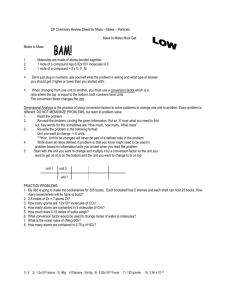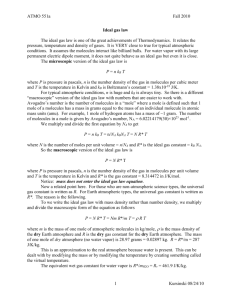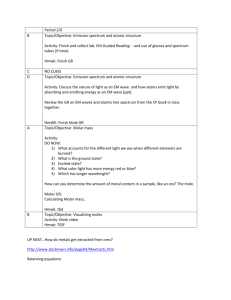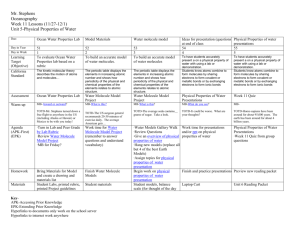Homework 14 Physics 2
advertisement
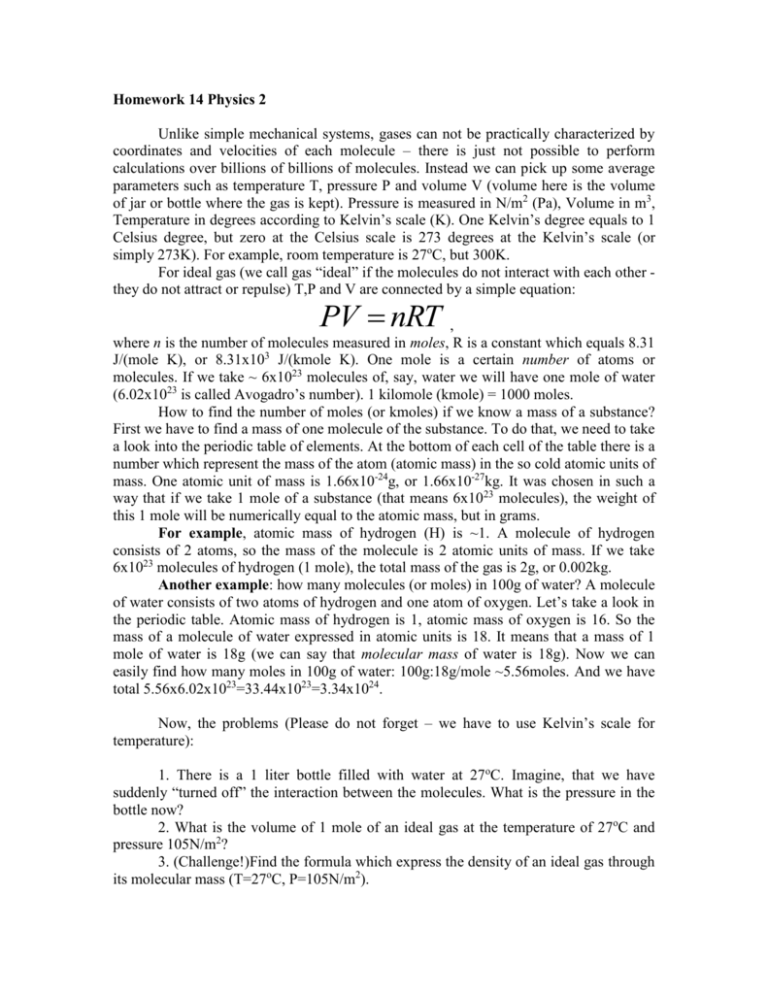
Homework 14 Physics 2 Unlike simple mechanical systems, gases can not be practically characterized by coordinates and velocities of each molecule – there is just not possible to perform calculations over billions of billions of molecules. Instead we can pick up some average parameters such as temperature T, pressure P and volume V (volume here is the volume of jar or bottle where the gas is kept). Pressure is measured in N/m2 (Pa), Volume in m3, Temperature in degrees according to Kelvin’s scale (K). One Kelvin’s degree equals to 1 Celsius degree, but zero at the Celsius scale is 273 degrees at the Kelvin’s scale (or simply 273K). For example, room temperature is 27oC, but 300K. For ideal gas (we call gas “ideal” if the molecules do not interact with each other they do not attract or repulse) T,P and V are connected by a simple equation: PV nRT , where n is the number of molecules measured in moles, R is a constant which equals 8.31 J/(mole K), or 8.31x103 J/(kmole K). One mole is a certain number of atoms or molecules. If we take ~ 6x1023 molecules of, say, water we will have one mole of water (6.02x1023 is called Avogadro’s number). 1 kilomole (kmole) = 1000 moles. How to find the number of moles (or kmoles) if we know a mass of a substance? First we have to find a mass of one molecule of the substance. To do that, we need to take a look into the periodic table of elements. At the bottom of each cell of the table there is a number which represent the mass of the atom (atomic mass) in the so cold atomic units of mass. One atomic unit of mass is 1.66x10-24g, or 1.66x10-27kg. It was chosen in such a way that if we take 1 mole of a substance (that means 6x1023 molecules), the weight of this 1 mole will be numerically equal to the atomic mass, but in grams. For example, atomic mass of hydrogen (H) is ~1. A molecule of hydrogen consists of 2 atoms, so the mass of the molecule is 2 atomic units of mass. If we take 6x1023 molecules of hydrogen (1 mole), the total mass of the gas is 2g, or 0.002kg. Another example: how many molecules (or moles) in 100g of water? A molecule of water consists of two atoms of hydrogen and one atom of oxygen. Let’s take a look in the periodic table. Atomic mass of hydrogen is 1, atomic mass of oxygen is 16. So the mass of a molecule of water expressed in atomic units is 18. It means that a mass of 1 mole of water is 18g (we can say that molecular mass of water is 18g). Now we can easily find how many moles in 100g of water: 100g:18g/mole ~5.56moles. And we have total 5.56x6.02x1023=33.44x1023=3.34x1024. Now, the problems (Please do not forget – we have to use Kelvin’s scale for temperature): 1. There is a 1 liter bottle filled with water at 27oC. Imagine, that we have suddenly “turned off” the interaction between the molecules. What is the pressure in the bottle now? 2. What is the volume of 1 mole of an ideal gas at the temperature of 27oC and pressure 105N/m2? 3. (Challenge!)Find the formula which express the density of an ideal gas through its molecular mass (T=27oC, P=105N/m2).

